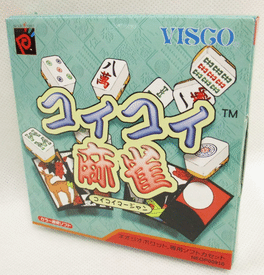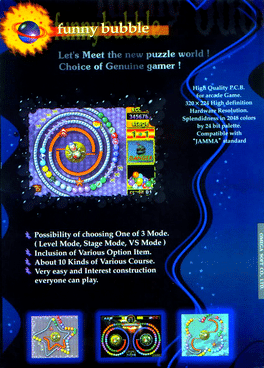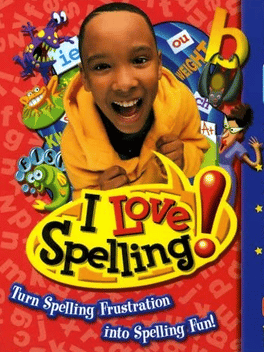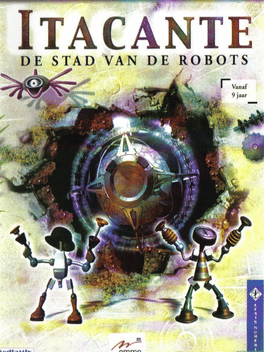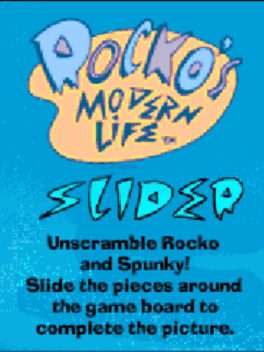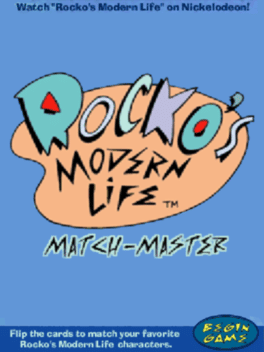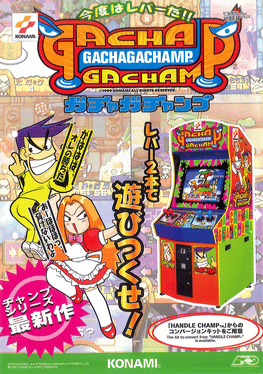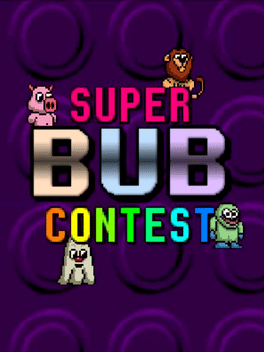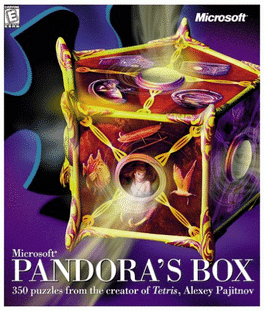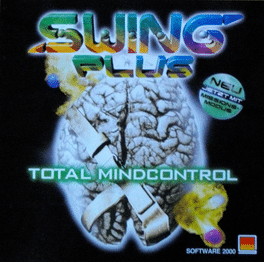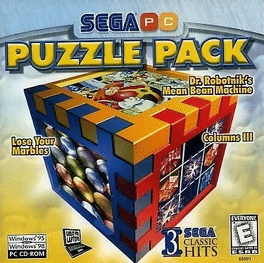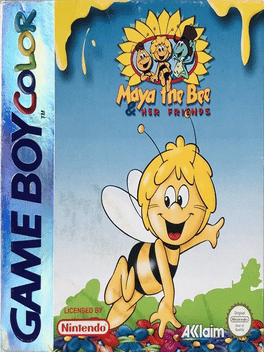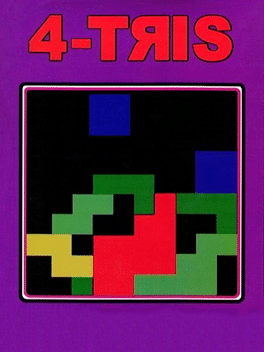New Ps3 Games - Page 265
-
Koi Koi Mahjong
2000
Koi Koi Mahjong
2000
Koi Koi Mahjong is a Miscellaneous game, developed and published by Visco, which was released in Japan in 2000 -
Gals Panic S2
2000
-
Funny Bubble
2000
Funny Bubble
2000
Color balls goes into spiral tube and you need to match 3 balls before the first ball enters the core. -
I Love Spelling!
1999
I Love Spelling!
1999
Building spelling skills becomes fun-and-games as you bop from planet to planet with your hilarious game-show host. An intelligent tracking system automatically adds misspelled words to your own personalized list, to give you extra practice where you need it most. With over 5,000 key words and 50 spelling-pattern word groups I Love Spelling! is based on core curriculum lessons, to match what kids learn in school. Words are divided into spelling lists that teach you the basics so you can apply it to almost any word in the English language. -
Itacante: La Cité des robots
1999
In this adventure and puzzle game made for children, players need to save the citizens of Itacante and fight against the tyrant Vulcor. Helped by their companions, they must construct and use robots to solve various puzzle boards, while being introduced to multiple scientific concepts. -
Rocko's Modern Life Slider
1999
Unscramble Rocko and Spunky! Slide the pieces around the game board to complete the picture. -
Rocko's Modern Life: Match-Master
1999
Generic memory game featuring images from the Nickelodeon cartoon. -
Gachaga Champ
1999
Gachaga Champ
1999
Gachaga Champ is an arcade Bishi Bashi game released on 1999 exclusively in Japan. It was developed and published by Konami. Two joysticks to compete in a wide variety of challenges. Players can take the challenge solo or go head to head with another player. Over 40 fun and addictive mini-games, it’s a great fun for both children and adults! -
Pop's Pop's
1999
Pop's Pop's
1999
Pop's Pop's is an arcade game by South Korean studio Afega. The goal of the game is to retrieve the title of a song. When the game is launched, the player can select a beginner or mania level. Next a spinning wheel is shown. The player has to press the "stop"-button and the wheel will slow down. When it stops, it is known how many points the player will get if he can guess a letter which is somewhere in the title. -
Pussy: Love Story from Titanic
1999
Pussy: Love Story from Titanic is a single player game which contains platform and falling brick puzzle solving elements. Gameplay is similar to the game Popils. The story behind the game is that Leonardo won a ticket to travel on the Titanic's maiden voyage. There he met the girl of his dreams, Kate. However Kate was rich and Leonardo was poor and worse, a thief. Their love was forbidden. The game consists of a series of fifty puzzles in which the objective is to get Kate & Leonardo to meet. Kate is usually on top of a parapet or trapped behind a wall shouting 'Help' and the player must guide Leonardo to her. To solve these puzzles Leonardo can climb ladders and, with his mighty fist, he can smash bricks. Smashed bricks disappear and the bricks above them will fall down to take their place. Some bricks are hollow and cannot be smashed, others will explode. The game also features teleports, which the manual assures were a common feature on the original Titanic, enemies to deal with, and two lengthy platform sequ -
Super Bub Contest
1999
Super Bub Contest
1999
Super Bub is a Net Yaroze game created by Alex Herbert that was featured on the Euro Demo 43, French Euro Demo 29 and the Euro Demo 04/99 demo discs that were distributed with the official PlayStation Official Magazine. It is a Puzzle Bobble-like game where colored bubbles are shot towards the ceiling. If you then shoot fireballs in a matching color at them they will break. -
Flux
1999
Flux
1999
Flux is a Direct X puzzle game for Windows. It features ray-traced graphics with many options to customize the game and has a worldwide high score competition. The play field is covered with colored tiles. When tiles of the same color are touching, they are grouped and can be eliminated from the field by clicking them. The other pieces on the screen fall into the holes left by the removed pieces which changes the layout of the play field. That is where the strategy comes in. The player has to consider the current move and it's ramification. You can even achieve an "ultra-high scoring combo" if you move the pieces in a clever way. -
Live Wire!
1999
Live Wire!
1999
A 3D puzzle game where you across a gridded landscape (Tron-cycle like) leaving a coloured trail behind you. Any square on the landcsape that you managed to colour on all sides gets claimed by you and earns you points. You're up against a varied number of opponents and the game covers about 50 levels, with the landscapes having different properties and shapes (e.g spherical world landscape). Add to this a bunch of pickups and bonus abilities, and you've got a retro- puzzle game that's a bit fun. -
Pandora's Box
1999
Pandora's Box
1999
In the game, players must travel around the world to different cities solving various kinds of puzzles to capture the seven "tricksters" - Maui, Puck, Eris, Coyote, Monkey, Anansi and Raven. Each trickster has a challenge puzzle after finding all the missing box pieces, acquired by solving the puzzle with each piece behind it in each city. The location of the pieces is randomized each game. The game offers sporadic bonuses. Hints are used to find where one piece goes if the player needs help figuring it out. Free puzzle tokens solve puzzles for the player if needed. A free puzzle token is awarded for every ten puzzles solved. -
Puzzle De Bowling
1999
-
Sega Puzzle Pack
1999
Sega Puzzle Pack
1999
The second pack titled Sega Puzzle Pack (Sega Archives from USA Vol. 2 in Japan) featured three games. -
Virus: It is Aware
1999
Virus: It is Aware
1999
Loosely based on the film (and in turn, the comic book), the game is about an alien electrical life-form (usually referred to as "the Evil") which hijacks a space station, beams itself down to a ship called The Electra and plans to take over the world. To do so, it killed the ship crew and outfitted them with implants to infiltrate the human race. Unlike in the film, the ship makes it to port and the cyborg monsters infest the "Nakomi hotel". A female police officer and specialist in criminology, Joan Averil, is sent in to investigate "strange events" along with her partner Sutter. They discover the monsters, and fight their way through, rescuing two civilians on the way. Yakuza criminals also appear as enemies on the way. As reports of strange activity on The Electra surfaces, they track the infestation down to the ship and board it. Joan reveals that her brother Thomas works on the ship, and hopes to find him. They do, but Sutter is killed. They eventually manage to blow up the ship and escape. The ending cinemat -
4-Tris
1999
4-Tris
1999
Tetraminoes are pieces created from 4 blocks joined together into 7 different patterns. By rotating them, you can position the pieces as they are falling so they fill open spaces. When an entire horizontal line fills with the pieces, the line clears and you are on your way to higher levels! Blocks will fall from the top of the screen towards the bottom. Arrange the pieces so that a row is completely filled by the blocks. Failing to do so will fill up the screen making it more and more difficult to clear rows. A cleared row will disappear giving you points and making game play easier.
